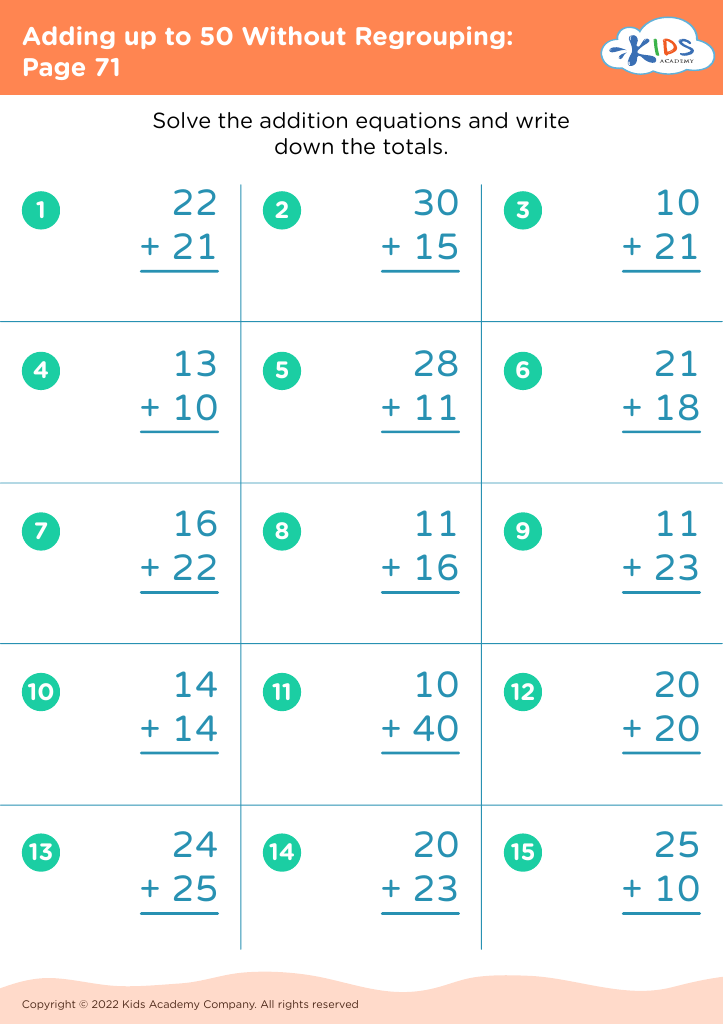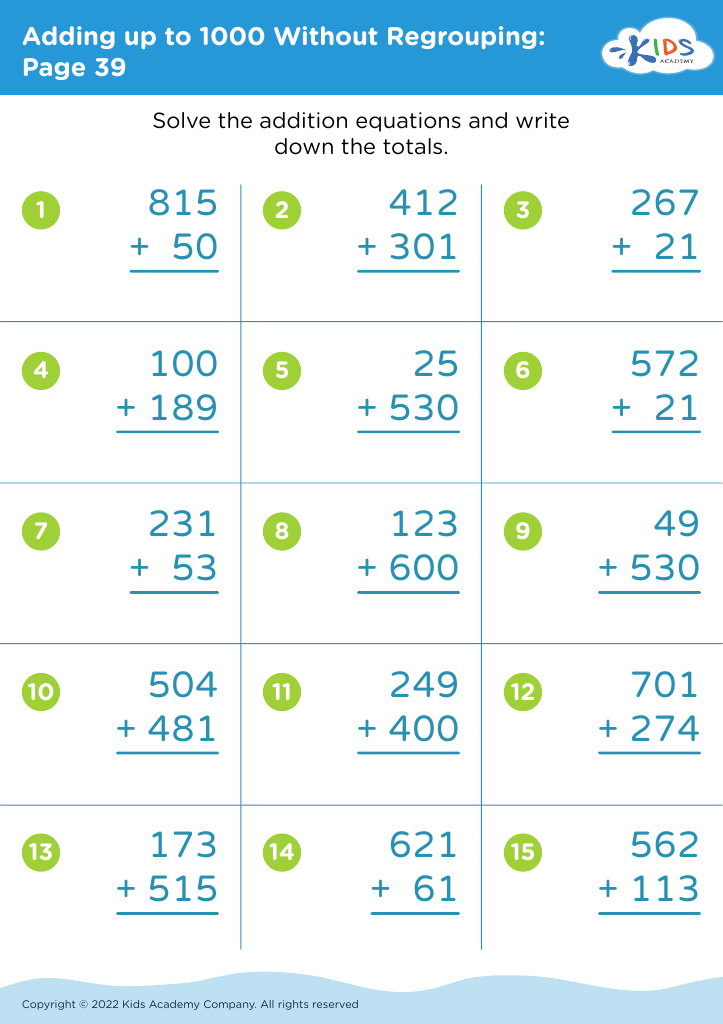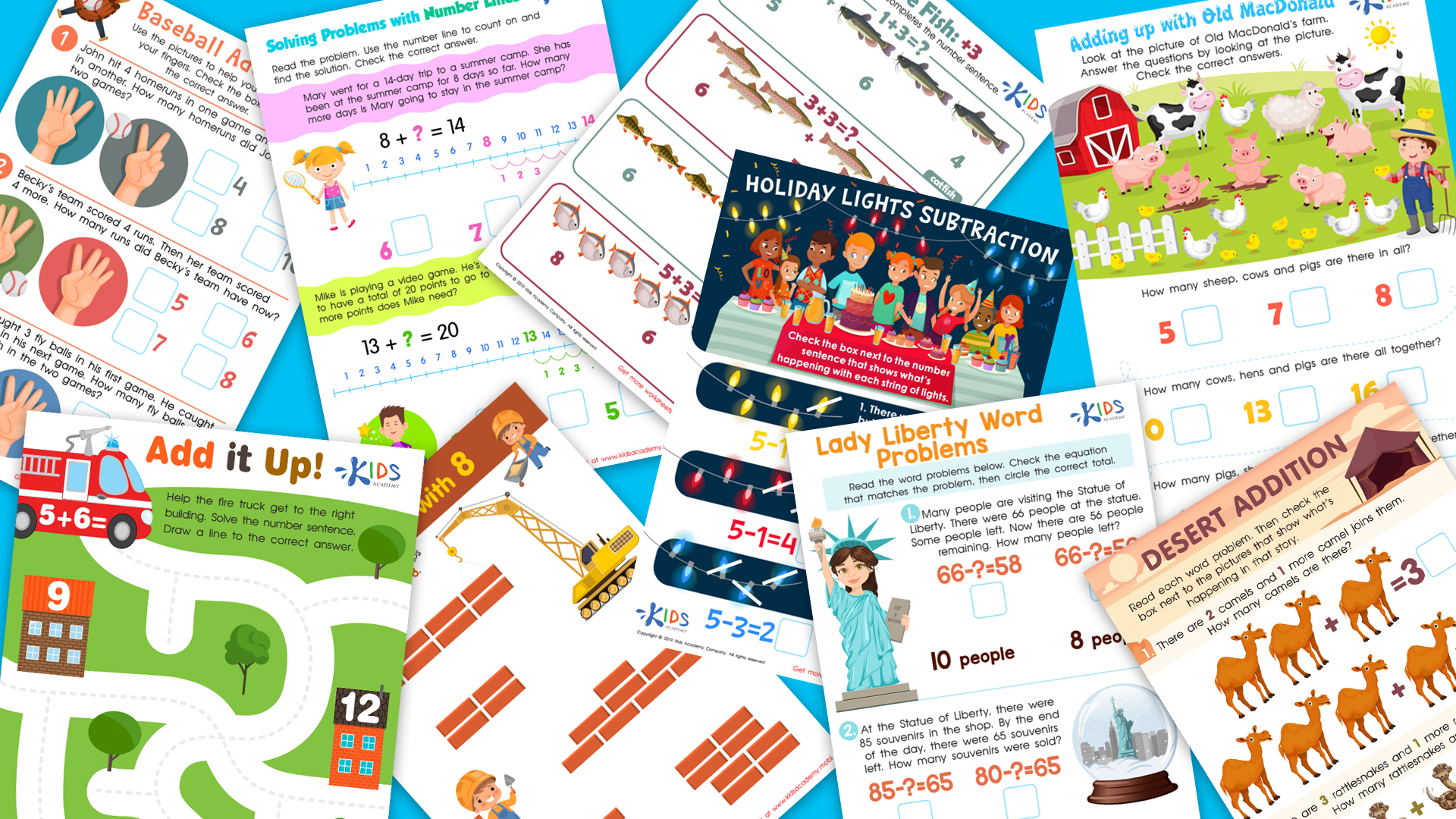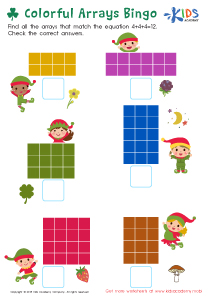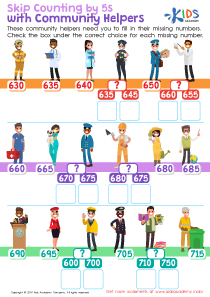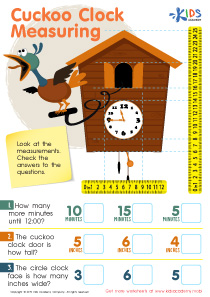Handwriting improvement Grade 2 Addition & Subtraction Worksheets
4 filtered results
-
From - To
Boost your second grader's handwriting and math skills with our engaging Handwriting Improvement Grade 2 Addition & Subtraction Worksheets! These thoughtfully designed worksheets combine essential math practice with handwriting enhancement, fostering improved motor control and legible writing. Each worksheet features fun, colorful exercises that encourage students to neatly write numbers and solve addition and subtraction problems. Tailored for young learners, these resources provide structured practice to develop confidence in their writing abilities while reinforcing foundational math concepts. Empower your child to excel in both subjects simultaneously—download our worksheets today and watch their skills flourish! Ideal for home or classroom use.
Handwriting improvement is an essential aspect of education, particularly for Grade 2 students as they develop foundational skills in literacy and numeracy, specifically in addition and subtraction. Good handwriting contributes to greater fluency in writing and clarity in presenting mathematical concepts. When students write their numbers and equations neatly, they reduce the likelihood of misinterpretation, which can lead to mistakes in calculations.
Additionally, handwriting encourages cognitive development. As students improve their penmanship, they refine their motor skills, which can enhance their overall academic performance. The process of writing also reinforces their understanding of mathematical concepts; writing out problems helps solidify their learning and improves retention.
Teachers and parents should advocate for handwriting instruction alongside numeracy skills. When children take pride in their handwriting, it instills a sense of accomplishment and confidence. Encouraging neat handwriting in math can help students express their thought processes more clearly and accurately, fostering a positive attitude towards problem-solving.
Finally, in a world increasingly reliant on technology, having strong handwriting skills remains vital. They serve as a lifelong tool for communication, thereby imparting its importance early in a child’s educational journey. Investing time in handwriting development sets a solid foundation for academic success.
